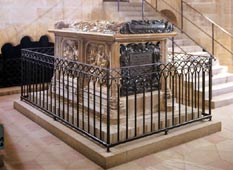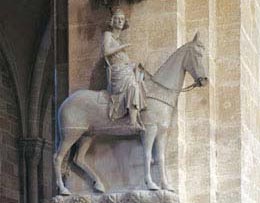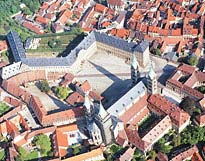|
|||||
 |
|||||
| Bamberg Diocesan Museum |
|
|
Bamberg Cathedral |
|
| Burgsinn |
 Impressum |
|
|
|
| Local History of Bamberg | |
| 902: "Castrum Babenberch” is first mentioned in the chronicle of famous historian abbot Regino of Pruehm (840–915) during the so-called "Babenberg Feud”. 1047: Suidger, the former bishop of Bamberg, now Pope Clemens II dies and is buried in the cathedral of Bamberg. His grave is the only burial place of a pope north of the Alps. 1185: A fire disaster destroys the cathedral for the second time. In 1237 the consecration of the reconstructed cathedral took place. The late Romanesque/early Gothic new building is preserved until today. With its opulent decoration with sculptures and ornaments the cathedral of Bamberg is the absolute culmination of German ecclesiastical architecture of the Staufer era. |
|





